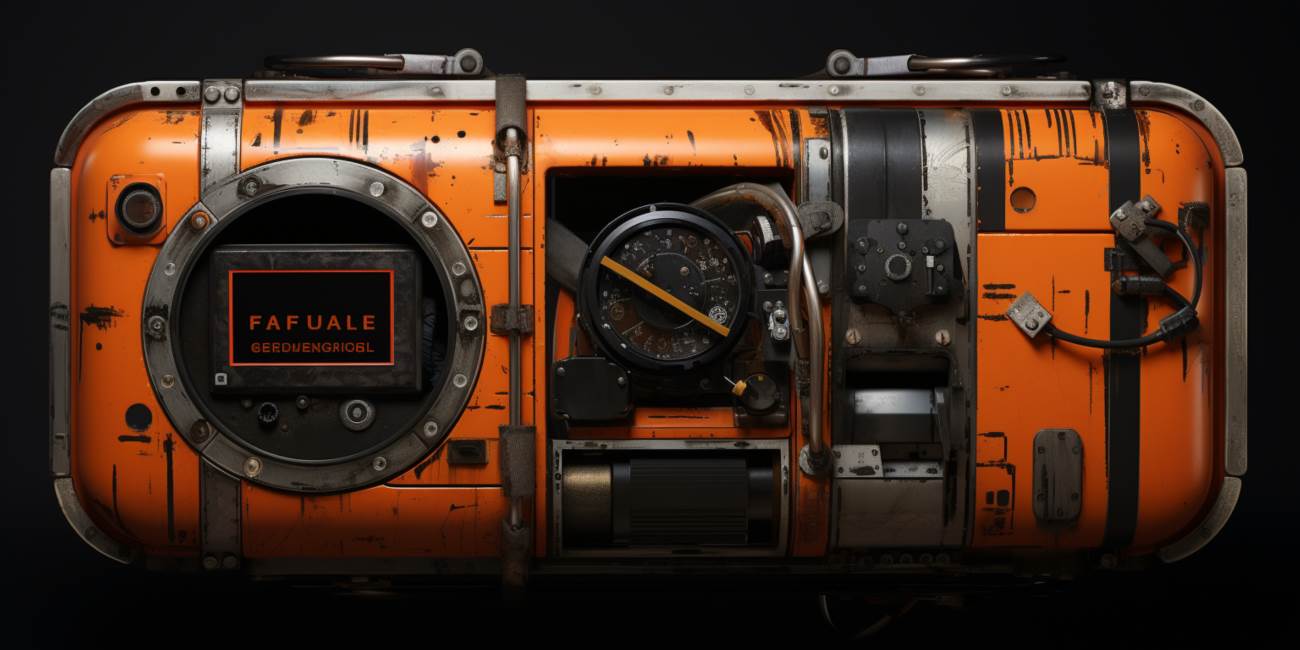The black box is a resilient piece of technology, designed to withstand the most extreme conditions. Housed within a sturdy casing, it can endure intense heat, pressure, and impact. The term “black box” is somewhat misleading, as these devices are generally orange, making them easier to locate amidst debris.
The primary function of the black box is to record and store crucial flight data. The Flight Data Recorder captures a plethora of information, ranging from altitude and airspeed to engine performance and control surface movements. This comprehensive data provides investigators with a detailed chronicle of the aircraft’s final moments.
Meanwhile, the Cockpit Voice Recorder records all sounds in the cockpit, including conversations between the flight crew. This audio record serves as a valuable resource for understanding the communication and decision-making processes during critical phases of flight.
One might wonder how these devices work their magic. The Flight Data Recorder constantly collects and stores data in a loop, with the newest information overwriting the oldest. In the event of an abnormal situation, the system triggers a signal to cease overwriting, preserving the critical data for post-incident analysis.
Similarly, the Cockpit Voice Recorder captures the last two hours of cockpit conversation. This duration is deemed sufficient to cover most flights, ensuring that pertinent information leading up to an incident is available for review.
Both recorders are equipped with an Underwater Locator Beacon (ULB), a crucial feature given that many accidents occur over water. The ULB emits acoustic signals, aiding search and rescue teams in locating the black box beneath the water’s surface.
The data retrieved from these black boxes is instrumental in aviation safety investigations. Analysis of the recorded information helps authorities identify the causes of accidents, contributing to the ongoing improvement of aircraft design, operational procedures, and pilot training.
In essence, the black box on a plane is a silent witness to the mysteries of flight, holding the key to unraveling the enigma of aviation incidents. As technology advances, so does the sophistication of these devices, ensuring that the black box continues to play a pivotal role in enhancing air travel safety.
The main components and functions of a black box on a plane
Within the intricate world of aviation technology, a crucial element stands out, quietly ensuring the safety and integrity of every flight – the black box. Contrary to its name, the black box is not black but is typically painted in bright colors to make it easier to locate after an aviation incident.
Comprising two main components, the Flight Data Recorder (FDR) and the Cockpit Voice Recorder (CVR), the black box serves as a silent witness to the events transpiring during a flight. The FDR is a treasure trove of data, recording information about the aircraft’s speed, altitude, heading, and various other crucial parameters at short intervals. This wealth of data aids investigators in reconstructing the sequence of events leading up to an incident.
On the other hand, the CVR captures the conversations and sounds transpiring within the cockpit. This includes communications between the pilot and co-pilot, as well as ambient sounds and warnings. This auditory record offers valuable insights into the decision-making processes and interactions among the flight crew.
Ensuring the black box’s resilience is paramount, given its role in unraveling the mysteries of aviation incidents. Constructed with materials like titanium and insulation to withstand extreme temperatures and pressures, the black box is a fortress for crucial flight data. Despite the advanced technology at play, the black box also features an Underwater Locator Beacon (ULB), which emits acoustic signals to aid in locating it if it finds itself submerged in water.
Understanding the importance of swift recovery, regulatory authorities mandate that commercial aircraft must have their black boxes equipped with an Emergency Locator Transmitter (ELT). This device activates upon impact, transmitting distress signals to search and rescue teams, further expediting the retrieval process.
The black box, a marvel of engineering, goes beyond mere data storage. It is a critical component in the continuous improvement of aviation safety. Each incident, no matter how tragic, becomes a lesson for enhancing the reliability and security of future flights. Aviation authorities around the world meticulously analyze black box data to identify trends, potential risks, and areas for improvement in aircraft design and operation.
As we delve into the intricate workings of a black box, it becomes evident that this unassuming device plays a pivotal role in ensuring the ongoing safety and advancement of aviation technology. From recording intricate flight details to providing a sonic panorama of the cockpit, the black box remains a silent sentinel in the vast skies.
How data is recorded and stored on an aircraft black box

When it comes to aviation safety, the recording and storage of crucial flight data play a pivotal role, and the aircraft black box is at the heart of this process. The solid state drive within the black box serves as the high-tech memory unit, replacing traditional flight data recorders that used magnetic tape. This shift to solid state drives has significantly enhanced the durability and reliability of data storage in the aviation industry.
The black box is housed in a robust crash-protected enclosure, designed to withstand the extreme forces and temperatures experienced during an aviation accident. This protective shell ensures that the vital data within the solid state drive remains intact, even in the harshest conditions. The crash-protected enclosure acts as a safeguard, preserving critical information that can provide valuable insights into the events leading up to an incident.
One of the challenges faced in aviation is the need to recover data from underwater locations in the event of a crash into bodies of water. This is where the underwater locator beacon becomes indispensable. Integrated into the black box, the underwater locator beacon is activated upon immersion in water, emitting acoustic signals that aid search and recovery operations. This crucial component enhances the chances of retrieving the black box, facilitating investigations into the causes of accidents that occur over water.
The combination of the solid state drive, crash-protected enclosure, and underwater locator beacon creates a robust system for recording, storing, and recovering critical flight data. These technological advancements not only contribute to aviation safety but also empower investigators with the tools needed to unravel the mysteries surrounding aviation incidents.
Regulations and standards for black boxes on commercial aircraft
When it comes to the aviation industry, the use of black boxes on commercial aircraft plays a pivotal role in ensuring safety and investigating incidents. These devices, officially known as flight data recorders (FDR) and cockpit voice recorders (CVR), are subject to stringent regulations to meet the standards set by aviation authorities.
The FAA regulations govern the design, installation, and maintenance of black boxes on aircraft operating in the United States. These regulations, outlined in Title 14 of the Code of Federal Regulations (CFR), specify the technical requirements and performance standards that black boxes must adhere to. The goal is to capture essential data during flight and survive accidents for subsequent analysis.
One crucial aspect of FAA regulations is the periodic inspection and testing of black boxes to ensure their functionality. Airlines must comply with these requirements to guarantee that the devices are in optimal working condition, ready to record critical information in the event of an incident or accident.
On the investigative front, the NTSB (National Transportation Safety Board) plays a key role. In the aftermath of an aviation incident, the NTSB conducts thorough investigations to determine the root causes and contributing factors. Black box data, retrieved and analyzed by NTSB experts, often serves as a crucial piece of evidence in understanding the sequence of events leading to an incident.
The NTSB’s investigations involve a meticulous examination of black box data, which includes parameters such as altitude, airspeed, heading, and communication recordings from the cockpit voice recorder. This information aids in reconstructing the timeline of events, helping investigators piece together the circumstances leading to an incident.
Internationally, the ICAO (International Civil Aviation Organization) sets global standards to harmonize aviation practices. ICAO’s standards encompass a wide range of aspects, including the specifications for flight recorders on commercial aircraft. These standards provide a framework for countries worldwide, ensuring consistency and a universal approach to aviation safety.
ICAO’s guidelines on flight recorders align with the overarching objective of enhancing global aviation safety. By establishing common standards for the design, installation, and performance of black boxes, ICAO contributes to a cohesive international aviation landscape where safety is prioritized.






